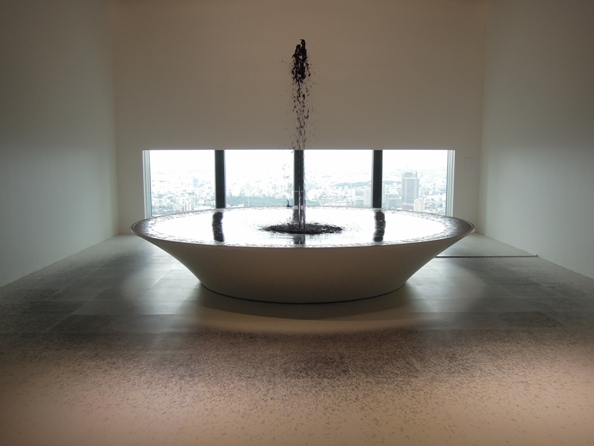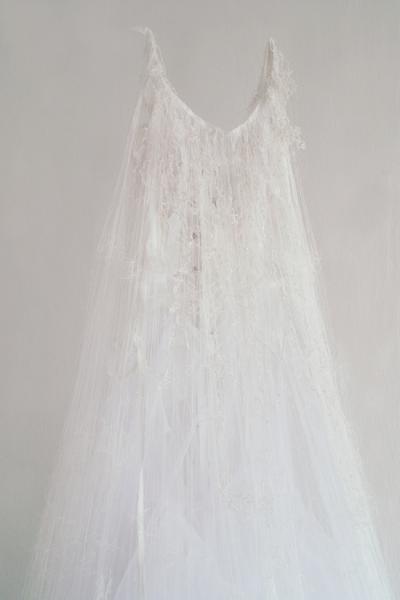On our trip to Italy in 2010 we were exposed to the most amazing art I had ever seen. I came home with stars in my eyes – and not just because of Botticelli and Michelangelo. I wrote a full report on the contemporary art we experienced [pdf].
I fully expected a continuation of this cutting edge, beautiful, emotional contemporary art before we embarked on our Japan 2012 trip.
The disappointment!
I had been planning to write a similar report for Japan, like the Italy one, but I’ve decided against that. Instead, I’m going to showcase a sum total of two pieces that really stood out for me.
1.Black Fountain

Maha Mustafa
Black Fountain
2008-
Mixed media installation
Dimensions variable
Two spouts of black liquid that falls back onto a white surface, creating a subtle pattern on the gallery floor where stray droplets land. This piece was made by an Iraqi woman about the duality of oil:
•Oil is the cornerstone of Arabian economy. Without oil, she would have been the daughter of a primitive nomadic tribe – probably sold off at a young age into slavery (prostitution). Instead, she gets to live in luxury – in Sweden nogal.
•Burning fossil fuels is destroying Earth. Time is running out for the environment.
I love how this work can speak on even deeper levels than these two, and how the actual piece is just a simple black-and-white statement – something the situation is not.
This was part of an exhibition called “Arab Express” at the Mori Art Museum.
2.Re-dress

Kaoru Hirano
untitled -brides
2012
Wedding dress
Dimensions variable
Image from Scai the Bathhouse website
Ms. Hirano works with old clothes, unravelled and then put back together. In the exhibition we saw there were three things:
•The wedding dress, suspended from three meters up in the air, unravelling to become an ethereal dress of gigantic proportions;
•Spider’s webs in the nooks and crannies of the gallery made of old t-shirts;
•Wrapped balls from socks and underwear.
I can only pose some questions is response:
Does the clothes make a person? What happens when a personality unravels? When we condense our identity into our outer layers? When we weave stories about ourselves instead of just letting people be who they are?
And then, when we are left with just the clothes, what can we learn about the person who used to wear it?
“Re-dress” at SCAI the Bathhouse gallery.
